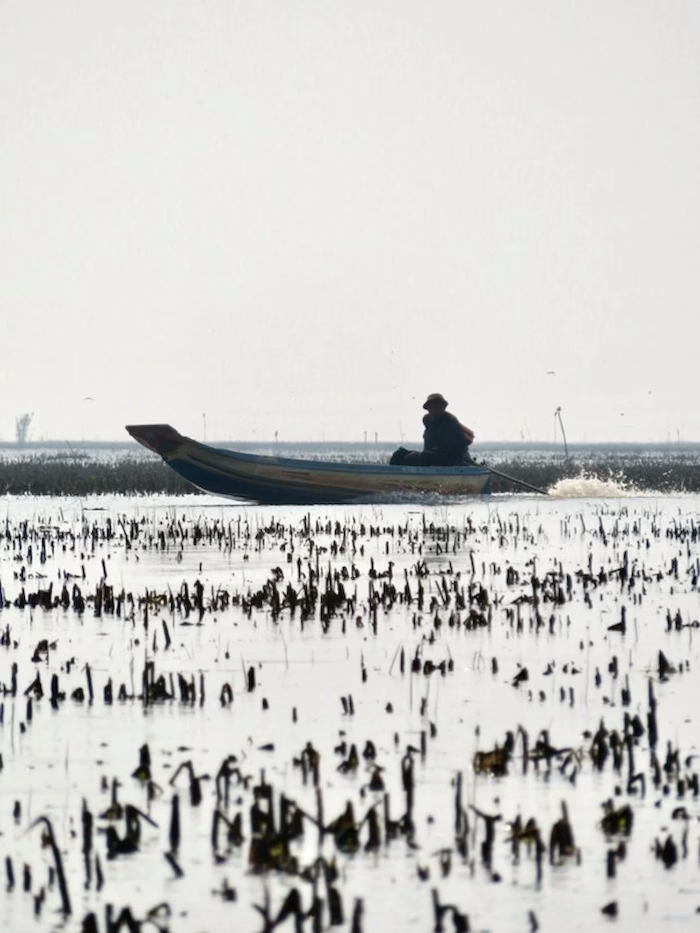The Seregenti Expedition
Name: Dr. John Kioko
Position: Lecturer in Wildlife Ecology
Program: Wildlife Management Studies, Tanzania
After exams, were ready for a break. On Sunday the 6th, we left for Serengeti National Park. The route to Serengeti goes through the Ngorongoro Conservation Area, that hosts Ngorongoro Crater – a wonder of the world. The road meadows through the steep hills and valleys, and opens in to the plains that lead to Serengeti. Maasai and livestock are allowed to live side by side within Ngorongoro Conservation – a unique management practice. Along the road, the grave of Michael Grzimck, son to Bernard Grzimck, a family renowned for their dedication to conservation of wildlife in Africa, reminds us of the rich conservation history. Between Ngorongoro Crater and Serengeti is the Olduvai Gorge, believed to be the “The cradle of Mankind”. The area is a famous prehistoric site, and here we were given a lecture on human evolution and shown the exaction sites by the Leaky’s and other archaeologists.
The name Serengeti is a Maasai word that means endless plain – ” a sea of grass” – the impression one gets when in the park. The southern area of the park had started to get rain and the wildebeest are expected to start arriving any time. From the park gate we curl slowly towards and we are bewildered by the vast grass wilderness. A large male lion strolled the plains in the pouring rains. Our camp – Nguchiro – is lined with Acacias and one can often spot a variety of game – we, however, have ample security to take of this.
On the following day we woke up at six for a early game drive that involves studying elephant and giraffe behavior. Later in the afternoon we visited the Serengeti Lion Research Project for a lecture use of Cameras traps to study carnivores. Ingela Jansson gave a very inspirational talk on lion field studies to the delight of the students. After the lecture we went on for a game drive. It was exciting to see interactions between baboons and leopards – a troop of baboon had tried to kill leopard curbs to “eliminate” potential future predator. We also saw a pride of lions lying on one of the rock outcrops.
In the third day, students in different safari vehicles were assigned different habitats so as to undertake a bird and ungulate survey. During the survey, students learned skills of studying habitat selection and preference among birds and ungulates. Fifty five birds species were identified, among them the magnificent Lilac Breasted Roller and the Endemic Magpie Shrike. A phenomenal 7 leopards were sighted with a 200 riverine area – amazing scene for everyone. After a lunch break we went to the park tourism center for a lecture on the management programmes and challenges in the park by the tourism park warden. After the lecture we went for game drive – saw our first cheetahs in the park, two female laying and lazing in the heat of day.
On the third day we drove to the north of the park looking for elephants and the elusive wildebeest. We were lucky to see an Aardwolf – a first we have seen of this. We went to Serena Lodge for lunch. The journey from the lodge back to our camp was relaxing and we gave the students the opportunity to reflect and enjoy their last game drive. After three full days in the park we were ready to go back to Moyo Hill. On the way home we saw five cheetahs and the wildebeest had started to stream back to the park in thousands- probably to bid bye to us. After a safe journey to Moyo, we have now settled in for the start of directed research. The rains have started here.
Related Posts

Framing Prek Toal: Photography, Conservation, and Life on the Tonle Sap


